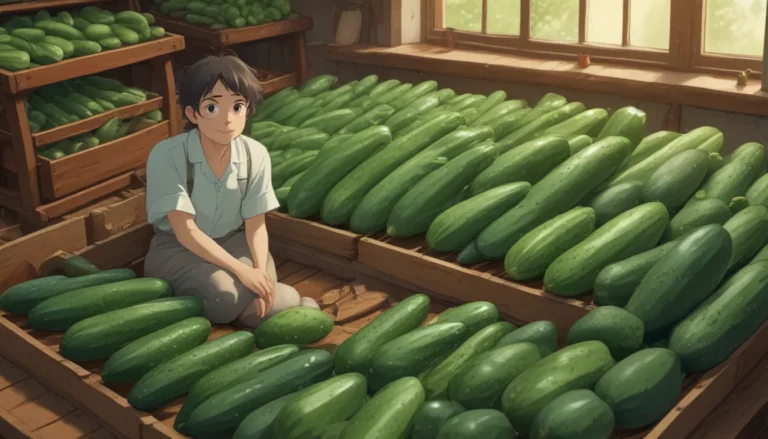Cultivating Tatarian Aster: A Late-Season Beauty

Are you looking to add a splash of lavender-blue to your garden in the late season? Look no further than the Tatarian aster, Aster tataricus. This non-native perennial from the Asteraceae family offers stunning yellow-centered blossoms that bloom well into the fall months.
In this comprehensive guide, we will walk you through everything you need to know to successfully cultivate Tatarian aster in your outdoor landscape. From its rich history to propagation techniques, growing tips, care and maintenance, and cultivars to select, we’ve got you covered.
What You Will Learn
Before we dive into the nitty-gritty details of growing Tatarian aster, let’s take a quick look at what you can expect to learn from this article:
- Cultivation and History
- Propagation
- How to Grow
- Growing Tips
- Care and Maintenance
- Cultivars to Select
- Managing Pests and Disease
- Best Uses
- Quick Reference Growing Chart
Now, let’s start our journey into the fascinating world of Tatarian aster!
Cultivation and History
The Tatarian aster, also known as Aster tataricus, boasts an upright profile with sturdy stems and paddle-shaped leaves. Its lavender-blue flowers surrounding a golden yellow center make for a striking display in the garden. While the plant may have a delicate appearance, it is actually quite resilient, standing tall against weather, pests, and diseases.
Interestingly, A. tataricus has a rich history dating back centuries. Herbalists have used it to create a root extract known as “purple aster tincture” or “Zi Wan.” Recent studies have even shown potential neuroprotective effects of this plant.
Tatarian Aster Propagation
If you’re looking to add Tatarian aster to your garden, you have a few options for propagation:
- Cutting
- Division
- Nursery plants
Starting from seed is not recommended as cultivated varieties may not produce true replicas of the parent plant. Instead, opt for cuttings, divisions, or nursery-grown plants for a successful start.
How to Grow
To grow Tatarian aster successfully, choose a sunny location with well-draining soil. Plant rooted cuttings or nursery-grown plants after the last frost date in early spring. Proper spacing is key to allow for adequate airflow and prevent overcrowding.
Maintaining even moisture during the initial phase is essential for acclimation, but once established, Tatarian aster demonstrates good drought tolerance. The plant’s vigorous growth and propensity to spread via rhizomes make it a great addition to any garden.
Growing Tips
For a thriving Tatarian aster plant, keep these growing tips in mind:
- Plant in the spring for establishment before winter.
- Ensure full sun exposure.
- Use well-draining soil.
- Provide even moisture during establishment.
- Space plants adequately for airflow.
Care and Maintenance
Once established, Tatarian aster requires minimal maintenance. However, a few tasks can help ensure the plant’s health and longevity:
- Deadhead spent flowers to reduce self-seeding.
- Stake leggy plants in fertile soil.
- Prune or pinch back as needed.
- Control the plant’s spread through division.
- Keep weeds and debris away from plants.
Tatarian Aster Cultivars to Select
For gardeners looking for smaller varieties of Tatarian aster, consider the following cultivars:
- ‘Jindai’: Compact in size with minimal pruning requirements.
- ‘Blue Lake’: Sub-compact with lavender-blue blooms, ideal for cutting gardens.
These cultivars offer a range of options for different garden settings and preferences.
Managing Pests and Disease
While Tatarian aster is relatively resistant to pests and diseases, general precautions should be taken to prevent fungal conditions and pests. Adequate spacing, well-draining soil, and proper maintenance practices can help keep your plants healthy and thriving.
Best Uses of Tatarian Asters
Whether used as a back-of-border anchor or in a meadow setting, Tatarian aster adds a pop of color and attracts beneficial insects to your garden. Pairing it with companion plants like goldenrod, joe-pye weed, and ornamental grass can create a vibrant and diverse landscape.
Quick Reference Growing Chart
For a quick overview of Tatarian aster’s key characteristics, refer to the following growing chart:
- Plant Type: Herbaceous flowering perennial
- Flower / Foliage Color: Lavender-blue with golden center
- Native to: Siberia
- Hardiness (USDA Zone): 3-9
- Bloom Time: September to hard frost
- Exposure: Full sun
- Spacing: 3 feet
- Height: 6 feet+ (true species); 2-4 feet (cultivars)
- Water Needs: Medium
- Maintenance: Minimal
- Attracts: Bees, birds, butterflies, and other beneficial insects
Saving the Best for Last
In conclusion, Tatarian aster is a versatile and resilient plant that can add late-season color and beauty to any garden. By following the tips and guidelines outlined in this article, you can successfully cultivate this stunning perennial in your outdoor landscape.
Now that you have all the information you need, it’s time to get out there and start growing your own Tatarian aster garden. Your efforts will be rewarded with a breathtaking display of lavender-blue blossoms that will brighten up your outdoor living space for years to come.
Let us know in the comments how you plan to incorporate Tatarian aster into your garden this year. And if you’re a fan of aster flowers, be sure to check out our other guides for more gardening inspiration!
Remember, with the right care and attention, your Tatarian aster plants will flourish and become a beloved feature in your garden. Happy gardening!





